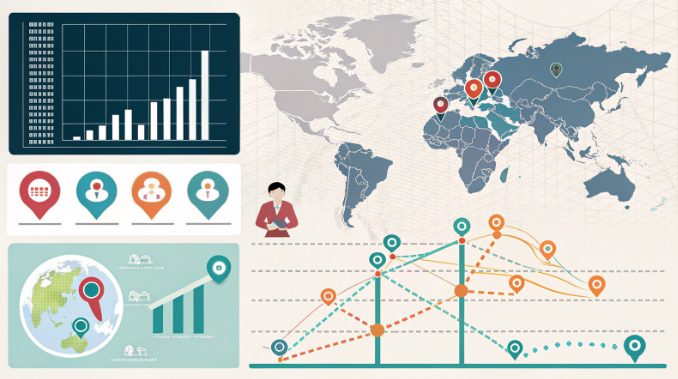Impact of US Server Location on Asian Users Experience

1. Overview of US Servers
US servers, whether hosting or colocation, are integral to global digital infrastructure. These servers, often located in data centers across the US, offer robust bandwidth, advanced technology, and cost-effective solutions. For instance, West Coast data centers like Los Angeles provide proximity to Asia, reducing latency for Asian users, while Midwestern hubs like Dallas ensure comprehensive coverage of North American and European markets.
Key advantages include:
- High-speed connectivity through Tier 1 ISPs
- Scalable resources for enterprise-level applications
- Compliance with international data regulations
2. Impact on Access Speed for Asian Users
Physical distance introduces inherent latency challenges. From China to Los Angeles, average network latency is ~150ms, significantly higher than intra-Asian connections. This delay directly affects:
- First Byte Time (TTFB): Time for the server to start sending data
- Total Page Load Time: Critical for Core Web Vitals like Largest Contentful Paint (LCP)
- Static Resource Delivery: Images, CSS, and JavaScript loaded from US servers
Network routing exacerbates issues. For example, Chinese ISPs often route traffic through multiple international gateways, increasing packet loss. Conversely, servers with optimized routes like AS9929 (used by RainyCloud) achieve sub-170ms latency in China.
3. Stability Challenges for Asian Users
Transoceanic connections face periodic outages due to undersea cable failures or ISP congestion. During peak hours (e.g., 8-11 PM UTC+8), US-Asia traffic can experience 20-30% higher latency. Key stability factors include:
- Multi-ISP Redundancy: BGP-based servers reduce single-point failures
- Network Monitoring: Tools like Smokeping detect latency spikes
- Server Uptime: Data centers with 99.99% SLA guarantees
Case Study: A Hong Kong e-commerce site using a Dallas server saw 15% higher downtime during Chinese New Year compared to a Los Angeles deployment.
4. Indirect SEO Implications
Google prioritizes sites with Core Web Vitals达标 (LCP < 2.5s, FID < 100ms). Slow US servers increase bounce rates—pages taking >3s to load lose 53% of visitors. This signals poor UX to search engines, lowering rankings.
Stability also matters. Frequent outages cause:
- Reduced crawl efficiency by search bots
- Lower domain authority over time
- Negative user reviews affecting local SEO
5. Optimization Strategies
A. CDN Acceleration
Deploying a global CDN (e.g., Cloudflare, Akamai) caches static content at edge nodes. For Asian users, this reduces latency by 40-60%. Key metrics to monitor:
- Cache hit rate (>85% ideal)
- Time-to-first-byte (TTFB) improvements
- Bandwidth savings on origin servers
B. Strategic Server Placement
Choose West Coast data centers (Los Angeles, San Francisco) for Asian audiences. Providers like RainyCloud offer AS9929/AS4837 routes, ensuring low-latency connections. For hybrid needs, combine US servers with Asian VPS instances for dynamic content.
C. Network Optimization
Implement:
- BBR congestion control for TCP
- HTTP/3 with QUIC for faster connections
- IP Anycast for distributed DNS
D. Load Balancing
Distribute traffic across multiple US-Asia nodes using tools like HAProxy. This mitigates ISP throttling and ensures 99.99% uptime.
6. Case Studies
Case 1: E-commerce Platform
A US-based retailer shifted from a Chicago server to Los Angeles with CDN. Asian conversion rates improved by 12% due to 1.2s faster page loads.
Case 2: SaaS Application
A DevOps tool using Dallas servers faced 25% API timeout in Japan. Migrating to a Tokyo-LA hybrid setup reduced errors to <5%.
7. Future-Proofing Your Infrastructure
As 5G and edge computing evolve, consider:
- Deploying edge nodes in Singapore or Tokyo
- Using AI-driven traffic prediction for load balancing
- Adopting IPv6 for better global routing

